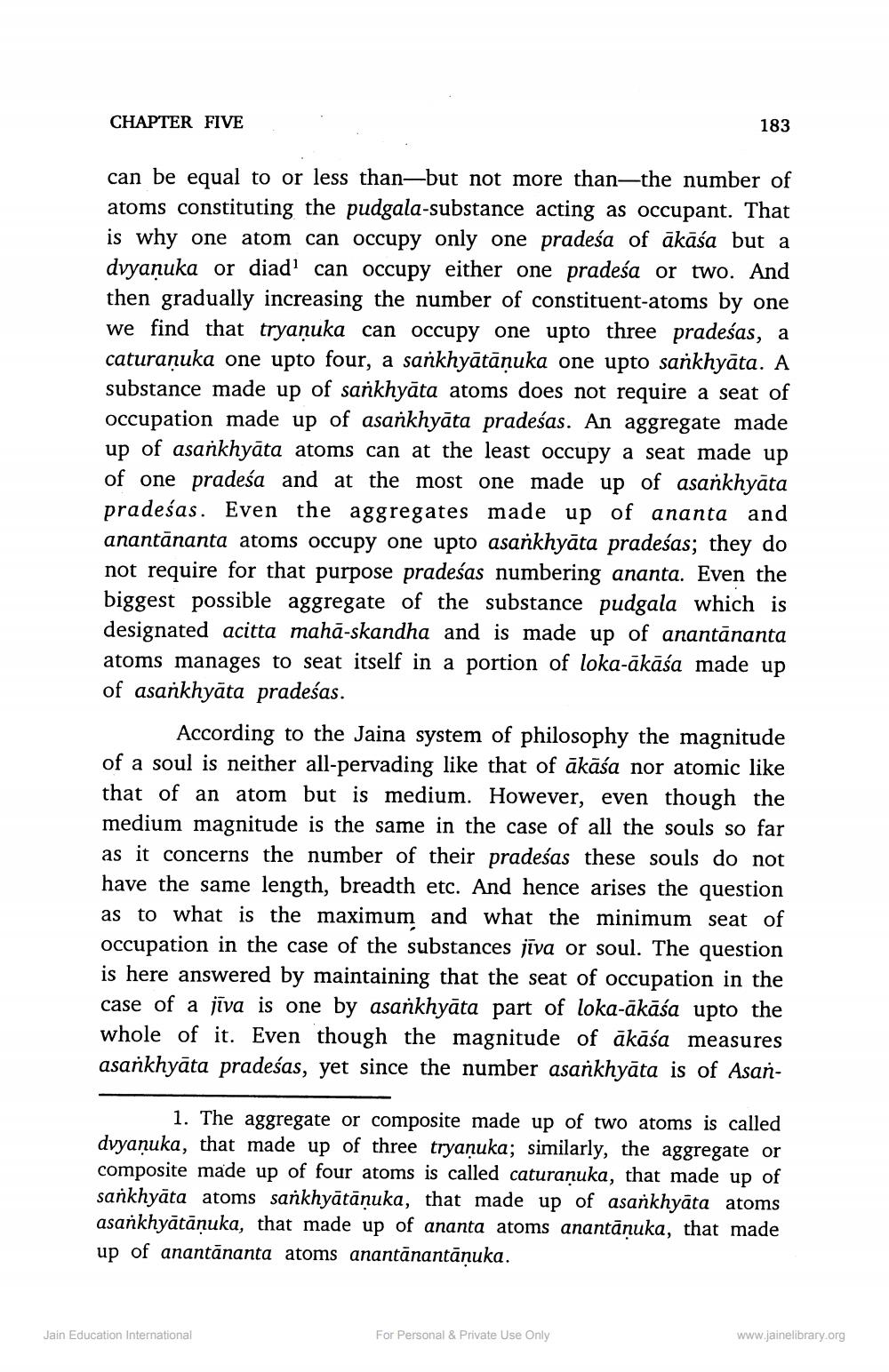________________
CHAPTER FIVE
183
can be equal to or less than—but not more than—the number of atoms constituting the pudgala-substance acting as occupant. That is why one atom can occupy only one pradeśa of ākāśa but a dvyaņuka or diad' can occupy either one pradeśa or two. And then gradually increasing the number of constituent-atoms by one we find that tryaņuka can occupy one upto three pradeśas, a caturaņuka one upto four, a sarkhyātāṇuka one upto sankhyāta. A substance made up of sankhyāta atoms does not require a seat of occupation made up of asankhyāta pradeśas. An aggregate made up of asankhyāta atoms can at the least occupy a seat made up of one pradeśa and at the most one made up of asankhyāta pradeśas. Even the aggregates made up of ananta and anantānanta atoms occupy one upto asarkhyāta pradeśas; they do not require for that purpose pradeśas numbering ananta. Even the biggest possible aggregate of the substance pudgala which is designated acitta mahā-skandha and is made up of anantānanta atoms manages to seat itself in a portion of loka-ākāśa made up of asankhyāta pradeśas.
According to the Jaina system of philosophy the magnitude of a soul is neither all-pervading like that of akāśa nor atomic like that of an atom but is medium. However, even though the medium magnitude is the same in the case of all the souls so far as it concerns the number of their pradeśas these souls do not have the same length, breadth etc. And hence arises the question as to what is the maximum and what the minimum seat of occupation in the case of the substances jīva or soul. The question is here answered by maintaining that the seat of occupation in the case of a jīva is one by asankhyāta part of loka-ākāśa upto the whole of it. Even though the magnitude of ākāśa measures asankhyāta pradeśas, yet since the number asankhyāta is of Asan
1. The aggregate or composite made up of two atoms is called dvyanuka, that made up of three tryanuka; similarly, the aggregate or composite made up of four atoms is called caturanuka, that made up of sankhyāta atoms sankhyātānuka, that made up of asankhyāta atoms asankhyātānuka, that made up of ananta atoms anantānuka, that made up of anantānanta atoms anantānantānuka.
Jain Education International
For Personal & Private Use Only
www.jainelibrary.org




